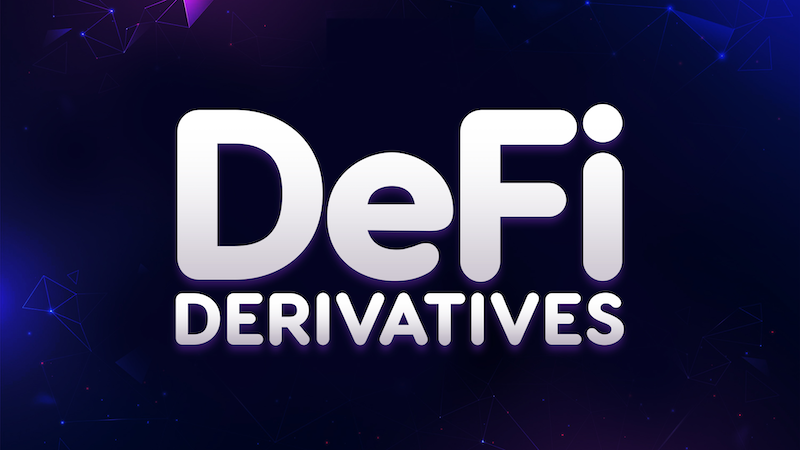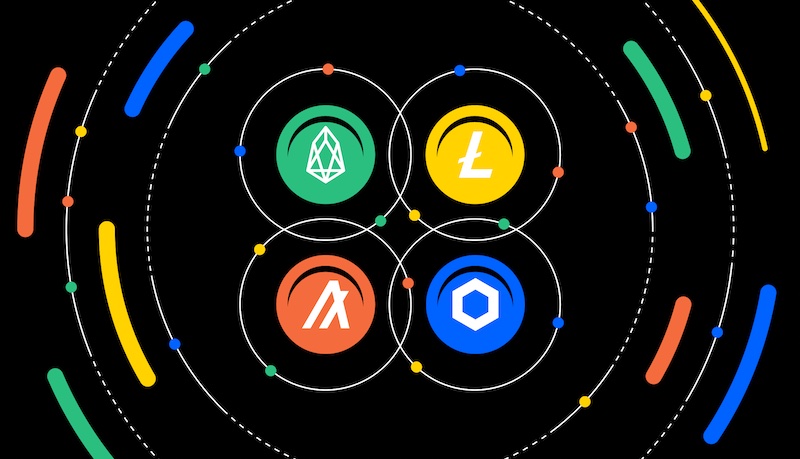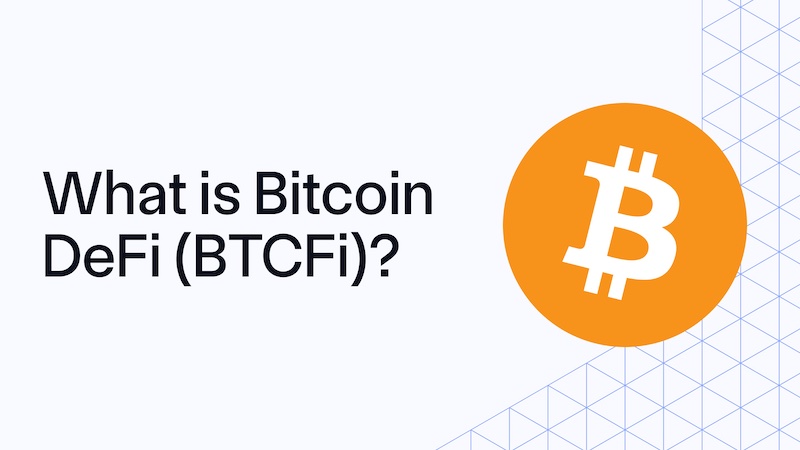Dive into Bitcoin DeFi (BTCFi) in 2025! Learn how it works, top protocols like Core, Stacks, and where to engage with the BTCFi ecosystem. Unlock Bitcoin’s potential!
Introduction: The Rise of BTCFi in 2025
Bitcoin, the world’s first and largest cryptocurrency by market cap, has long been viewed as a store of value rather than a platform for decentralized finance (DeFi). However, the emergence of the BTCFi ecosystem is changing this narrative, unlocking Bitcoin’s potential for lending, borrowing, staking, and decentralized applications (dApps). With Bitcoin’s market cap exceeding $1.7 trillion and the DeFi market projected to reach $700 billion in total value locked (TVL) by 2025, BTCFi is poised to bridge Bitcoin’s security with DeFi’s innovation.
This comprehensive guide explores what BTCFi is, how it works, its benefits and risks, top protocols like Core, Stacks, and Sovryn, and how to participate in the ecosystem, empowering investors to capitalize on Bitcoin’s evolving role in DeFi.
Key Takeaways
- What is BTCFi?: Bitcoin DeFi (BTCFi) integrates Bitcoin into DeFi, enabling lending, borrowing, and dApps using BTC or BTC-backed assets on Bitcoin layers or sidechains.
- BTCFi Evolution: Layer-2 solutions (e.g., Lightning Network) and sidechains (e.g., Rootstock) make Bitcoin programmable for smart contracts.
- Top Protocols: Core, Stacks, Sovryn, and Babylon lead BTCFi with innovative lending, staking, and governance solutions.
- High Potential, High Risk: BTCFi offers yield opportunities but faces technical complexity, smart contract risks, and regulatory uncertainties.
- Where to Participate: Engage with BTCFi via wallets like MetaMask, exchanges like Binance, or native platforms like Stacks’ Hiro Wallet.
- Security Focus: Use non-custodial wallets and audited protocols to safeguard BTC in the DeFi ecosystem.
What is Bitcoin DeFi (BTCFi)?
BTCFi refers to decentralized finance protocols and applications that leverage Bitcoin (BTC) or Bitcoin-backed assets for financial services like lending, borrowing, trading, staking, and yield farming. Unlike Ethereum-based DeFi, which dominates with $120 billion in TVL, BTCFi operates on Bitcoin’s base layer, Layer-2 solutions, or sidechains, enabling smart contract functionality while maintaining BTC’s security and decentralization.
How BTCFi Works:
- Layer-2 Solutions: Technologies like the Lightning Network and rollups (e.g., Core’s zk-rollups) enable fast, low-cost transactions for DeFi applications.
- Sidechains: Rootstock (RSK) and Liquid Network provide smart contract capabilities, allowing BTC to be used in DeFi protocols.
- Bitcoin-Backed Tokens: Wrapped Bitcoin (WBTC) and tokenized BTC (e.g., tBTC) bridge BTC to Ethereum or other chains for DeFi compatibility.
- Native BTC Protocols: Projects like Stacks and Babylon enable smart contracts directly on Bitcoin’s blockchain using Clarity or staking mechanisms.
- Oracles and Bridges: Chainlink and other oracles provide price feeds, while cross-chain bridges connect BTC to DeFi ecosystems.
Examples:
- Lending BTC on Sovryn to earn yields.
- Staking BTC with Babylon for passive income.
- Trading WBTC on Uniswap for DeFi exposure.
Why BTCFi Matters in 2025
BTCFi unlocks Bitcoin’s $1.7 trillion market cap for DeFi, combining Bitcoin’s unparalleled security with the flexibility of decentralized applications. Key drivers include:
- Scalability Improvements: Layer-2 solutions like Lightning and Core reduce transaction costs and speed, making BTC viable for DeFi.
- Programmability: Sidechains (Rootstock) and native protocols (Stacks) enable smart contracts, expanding Bitcoin’s use cases.
- Yield Opportunities: BTCFi offers 2-10% APY on lending/staking, attracting HODLers seeking passive income.
- Interoperability: Bridges and wrapped tokens integrate BTC with Ethereum, Solana, and other DeFi ecosystems.
- Institutional Interest: With spot BTC ETFs and corporate adoption, BTCFi is gaining traction among institutional investors.
Benefits of BTCFi
BTCFi offers unique advantages for investors and developers:
- Bitcoin’s Security: Built on the most secure blockchain, BTCFi inherits Bitcoin’s robust consensus and decentralization.
- Passive Income: Lending, staking, and yield farming provide returns on idle BTC, with APYs ranging from 2-10%.
- Global Access: Anyone with a wallet can participate, bypassing traditional financial gatekeepers.
- Interoperability: Wrapped BTC (WBTC) and bridges enable BTC use in Ethereum-based DeFi protocols like Aave.
- Innovation: Protocols like Stacks introduce smart contracts and dApps, expanding Bitcoin’s utility beyond a store of value.
- Liquidity: BTCFi platforms like Sovryn and Core offer high liquidity for trading and lending.
Risks of BTCFi
Despite its potential, BTCFi carries significant risks:
- Technical Complexity: Layer-2 and sidechain solutions require technical understanding, increasing user error risks.
- Smart Contract Vulnerabilities: Bugs in BTCFi protocols can lead to fund losses, as seen in past DeFi hacks.
- Bridge Risks: Cross-chain bridges (e.g., WBTC) are prone to hacks, with $2 billion lost in bridge exploits since 2022.
- Regulatory Uncertainty: Governments may scrutinize BTCFi, especially for tokenized assets or lending platforms.
- Volatility: BTC’s price swings impact DeFi yields and collateral ratios.
- Liquidity Risks: Emerging BTCFi protocols may have lower liquidity, affecting asset tradability.
Mitigate risks by using audited protocols, non-custodial wallets, and diversifying investments.
Top BTCFi Protocols in 2025
Here are the leading BTCFi protocols, their native tokens (if applicable), and how they drive BTCFi.
1. Core (CORE) – Layer-2 Lending and Staking
Why Core?
Core uses zk-rollups to scale Bitcoin for DeFi, offering lending, borrowing, and staking with native BTC.
Key Features:
- Native BTC lending with 3-8% APY.
- zk-rollups for low-cost, high-speed transactions.
- Governance via CORE token (not yet launched).
Why Participate?
Core’s $500 million TVL and focus on native BTC make it a BTCFi leader.
How to Engage: Use MetaMask or Core’s wallet; available on Core’s dApp platform.
2. Stacks (STX) – Smart Contracts on Bitcoin
Why Stacks?
Stacks enables smart contracts and dApps on Bitcoin using the Clarity language, with STX as the governance and staking token.
Key Features:
- Stacking for ~9% APY by locking STX.
- Bitcoin-backed dApps like ALEX (DEX) and Arkadiko (lending).
- Nakamoto upgrade (2024) for faster confirmations.
Why Invest in STX?
Stacks’ $1 billion TVL and Bitcoin anchoring ensure long-term growth.
Where to Buy STX: Binance, Coinbase, Kraken, Gate.io.
3. Sovryn (SOV) – DeFi on Rootstock
Why Sovryn?
Sovryn, built on Rootstock (RSK), offers lending, borrowing, and trading with native BTC. SOV is the governance token.
Key Features:
- BTC lending with 4-10% APY.
- Zero-knowledge rollups for scalability.
- Margin trading and AMM pools.
Why Invest in SOV?
Sovryn’s $300 million TVL and RSK’s Bitcoin peg make it a BTCFi powerhouse.
Where to Buy SOV: Uniswap, Gate.io, Sovryn’s DEX.
4. Babylon (No Token Yet) – Bitcoin Staking Protocol
Why Babylon?
Babylon enables native BTC staking for proof-of-stake (PoS) chains, allowing BTC holders to earn yields without wrapping.
Key Features:
- Staking BTC for 2-5% APY on PoS networks.
- Trustless staking via Bitcoin’s security.
- Integration with Cosmos and Polkadot.
Why Participate?
Babylon’s $200 million TVL and native BTC focus attract HODLers.
How to Engage: Use Babylon’s dApp with a Bitcoin wallet (e.g., Leather).
5. Lightning Network – Scalable BTCFi Transactions
Why Lightning Network?
The Lightning Network is Bitcoin’s Layer-2 for fast, cheap transactions, enabling DeFi apps like lending and micropayments.
Key Features:
- Near-instant BTC transactions with sub-cent fees.
- Integration with wallets like Phoenix and Breez.
- Supports DeFi apps like LN Markets (futures trading).
Why Participate?
Lightning’s scalability drives BTCFi adoption for micro-DeFi.
How to Engage: Use Lightning-compatible wallets; no token required.
How to Participate in the BTCFi Ecosystem
Getting started with BTCFi requires a wallet, access to protocols, and an understanding of DeFi mechanics. Follow these steps:
- Choose a Wallet:
- Software Wallets: MetaMask (for WBTC, Stacks), Trust Wallet (multi-chain), Hiro Wallet (Stacks-specific), or Leather (Bitcoin-native).
- Hardware Wallets: Ledger Nano X or Trezor Model T for secure BTC storage, paired with software wallets for DeFi.
- Acquire BTC or Tokens:
- Buy BTC on exchanges like Binance, Coinbase, or Kraken.
- Purchase BTCFi tokens (e.g., STX, SOV) on Binance, Uniswap, or Gate.io.
- Use wrapped BTC (WBTC) on Ethereum-based DeFi via Uniswap.
- Connect to Protocols:
- Access Core, Sovryn, or Stacks dApps via their platforms or wallets.
- Use Babylon for native BTC staking or Lightning Network for micro-DeFi.
- Engage in DeFi Activities:
- Lending/Borrowing: Deposit BTC on Sovryn or Core for yields.
- Staking: Lock STX on Stacks or BTC on Babylon for APY.
- Trading: Swap WBTC on Uniswap or use Sovryn’s AMM.
- Secure Your Assets:
- Store private keys offline.
- Enable 2FA and use non-custodial wallets.
- Verify dApp URLs to avoid phishing.
Example: To lend BTC on Sovryn, connect MetaMask to Rootstock, deposit BTC into Sovryn’s lending pool, and earn 4-10% APY.
Where to Buy BTCFi Tokens in 2025
To engage with BTCFi protocols, acquire their native tokens or BTC on these trusted platforms:
- Binance: Supports BTC, STX, SOV; low fees, high liquidity.
- Coinbase: Offers BTC, STX; user-friendly for U.S. investors.
- Uniswap: Ideal for WBTC, SOV; requires a Web3 wallet like MetaMask.
- Kraken: Supports BTC, STX; known for security.
- Gate.io: Wide range, including STX, SOV.
- Sovryn DEX: Native trading for SOV on Rootstock.
- KuCoin: Supports STX, WBTC for advanced traders.
Safety Tips:
- Use non-custodial wallets (e.g., MetaMask, Ledger) for control over keys.
- Enable 2FA on exchanges.
- Verify platform URLs to avoid phishing.
- Start with small transactions to test reliability.
Strategies for BTCFi Success
- Diversify Across Protocols: Engage with Core, Stacks, Sovryn, and Babylon to spread risk.
- Research Fundamentals: Check TVL, audits, and team credentials on DefiLlama or GitHub.
- Maximize Yields: Lend BTC on Sovryn or stake STX on Stacks for passive income.
- Use Native BTC: Prioritize protocols like Babylon for trustless BTC staking.
- Hedge Volatility: Pair BTCFi with stablecoin DeFi (e.g., DAI on Aave) for stability.
Risks Specific to BTCFi
In addition to general DeFi risks, BTCFi faces unique challenges:
- Layer-2/Sidechain Risks: Bugs in Lightning or Rootstock can disrupt transactions.
- Bridge Vulnerabilities: WBTC and cross-chain bridges are hack targets.
- Adoption Hurdles: BTCFi is nascent, with lower TVL ($2 billion) than Ethereum DeFi.
- Technical Barriers: Users need to navigate complex setups (e.g., Rootstock, Stacks wallets).
- Regulatory Scrutiny: BTCFi lending/staking may face stricter regulations.
Mitigate risks by using audited protocols, diversifying, and securing assets with hardware wallets.
Final Thoughts
The BTCFi ecosystem is redefining BTC’s role in DeFi, combining its unmatched security with the flexibility of lending, staking, and dApps. Protocols like Core, Stacks, Sovryn, and Babylon are leading the charge, offering innovative ways to earn yields on BTC. By using trusted wallets like MetaMask or Hiro, engaging with platforms like Binance or Uniswap, and employing strategic risk management, investors can tap into BTCFi’s potential in 2025.
As the DeFi market grows to $700 billion, BTCFi represents a compelling opportunity to unlock Bitcoin’s $1.7 trillion market cap for decentralized finance. Stay informed, secure your assets, and explore the future of BTCFi.
FAQs About BTCFi in 2025
1. What is BTCFi?
BTCFi integrates Bitcoin into DeFi, enabling lending, borrowing, staking, and dApps using BTC or BTC-backed assets on Bitcoin layers or sidechains.
2. Why invest in BTCFi in 2025?
BTCFi offers passive income (2-10% APY), leverages Bitcoin’s $1.7 trillion market cap, and combines Bitcoin’s security with DeFi innovation, but it carries technical and regulatory risks.
3. Which protocols lead the BTCFi ecosystem?
Core, Stacks, Sovryn, Babylon, and Lightning Network are top BTCFi platforms, offering lending, staking, and smart contract functionality.
4. How can I participate in BTCFi safely?
Use non-custodial wallets (MetaMask, Ledger), buy BTC/STX/SOV on Binance or Uniswap, engage with audited dApps, and enable 2FA.
5. What are the risks of BTCFi?
Risks include smart contract bugs, bridge hacks, technical complexity, regulatory uncertainty, and BTC volatility. Use audited protocols and diversify to mitigate.







